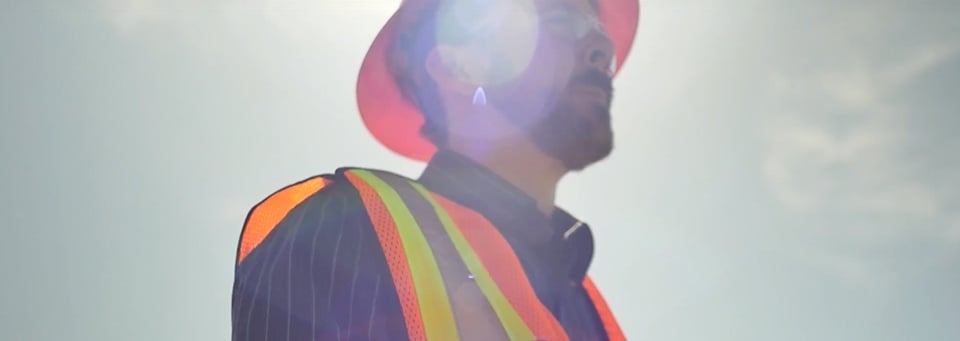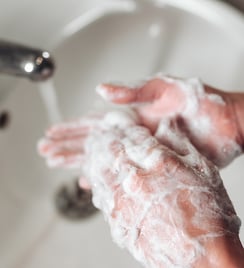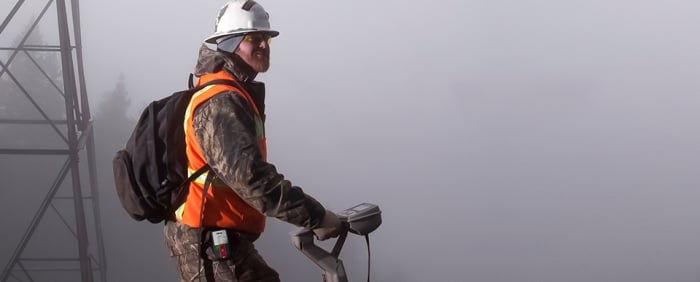Blackline Safety is a technology leader driving innovation in the industrial workforce through IoT (Internet of Things). With connected safety devices and predictive analytics, Blackline enables companies to drive towards zero safety incidents and improved operational performance. Blackline provides wearable devices, personal and area gas monitoring, cloud-connected software and data analytics to meet demanding safety challenges and enhance overall productivity for organizations with coverage in more than 100 countries. Armed with cellular and satellite connectivity, Blackline provides a lifeline to tens of thousands of people, having reported over 200 billion data-points and initiated over seven million emergency alerts. For more information, visit BlacklineSafety.com and connect with us on Facebook, Twitter, LinkedIn and Instagram.
Should Your Lone Worker Safety Policy Include Disease & Illness Prevention?
Blackline Safety, Leader in Connected Gas Detection & Lone Worker Safety
July 27, 2020

Because of new social distancing standards brought about by the ongoing COVID-19 pandemic, many workers are increasingly operating physically further apart from one another. At times, this may be due to a workforce that’s been reduced in numbers due to affected team members or it may be because employees are working different shifts to accommodate for new work standards. The underlying reason for these changes is the highly contagious nature of the coronavirus disease.
This pandemic is a reminder that companies can’t be complacent about their workers’ health and safety. To be sure you have the right lone worker policy for your organization, now is the time to consider how this unprecedented event may require you to alter your current lone working procedures — with a greater emphasis on illness prevention than ever before.
Disease Prevention Policies and Procedures
Two tiers of disease prevention are recommended — one that’s general for the majority of employees, and one that’s more specific for your lone workers. For your general policy, the United States Department of Labor’s Occupational Safety and Health Administration (OSHA) offers a list to use, which includes:
- Frequent handwashing with soap and water for 20 seconds or more
- Using hand sanitizer with at least 60% alcohol when soap and water aren’t available
- Not touching your eyes, nose or mouth if your hands aren’t washed
- Covering coughs and sneezes
- Avoiding close contact with people who are ill
- Staying home when ill
- Taking personal risk factors into account when making health-related decisions
 Include hygienic information in your policy about how to help keep the workplace safe — for example, how to clean work-related surfaces where pathogens may linger — using the best-known information available. In the United States, this includes information provided by the Centers for Disease Control and Prevention (CDC). Here are some insights provided by the United Kingdom government, and here is advice from the World Health Organization (WHO).
Include hygienic information in your policy about how to help keep the workplace safe — for example, how to clean work-related surfaces where pathogens may linger — using the best-known information available. In the United States, this includes information provided by the Centers for Disease Control and Prevention (CDC). Here are some insights provided by the United Kingdom government, and here is advice from the World Health Organization (WHO).
After including a broad disease prevention safety policy for your company, the next step is to determine what extra considerations need to be made for lone workers.
Illness & Disease Risk Assessment
What kind of protective gear should a lone worker wear? This, of course, depends on the particulars of the job. If a healthcare job involves home visits, perhaps your company is limiting those to only the most urgent patients and using virtual tools for the rest. However, in the cases when a home needs to be physically visited, what should those lone workers wear? Masks, gloves and what else? Several questions need to be asked and answered in order to protect workers in each of the various roles and scenarios they face — including topics as to how PPE should be cleaned or replaced. Are masks and gloves replaced after each home visit?
Federal, state and local guidelines have been rapidly evolving as circumstances surrounding COVID-19 continue to change, and this can cause confusion. In response to these uncertain times, your company should ensure they’re keeping up-to-date on the latest regulations and implement a consistent method of clearly communicating them to employees. This includes, but isn’t limited to, restrictions or changes to how lone working personnel perform their duties.
Although lone workers operate beyond sight and sound of others for at least some duration of their shift, it doesn’t mean they don’t come into contact with other people throughout their day. COVID-19 is unprecedented in our time and should be approached as a new risk, so an assessment should be performed by your business for each lone worker role and activity, particularly when they may be working with members of the public and in uncontrolled settings.
As companies adopt additional safety measures, it will be important to determine which of these should remain in company policies and procedures, going forward, for more thorough safety protocols.
Reporting Procedures
Now more than ever, it’s critical to understand the challenges that your teams face. Be sure to provide clear ways for your lone workers to communicate when they are experiencing symptoms of illness or if they have been in contact with someone potentially infected with COVID-19. Have clear instructions available that let them know how to respond to these situations, ranging from going home until a fever is gone, for example, to self-isolating for a per-determined period of time.
Another key element is industrial contact tracing technology. If an employee experiences symptoms or tests positive for the coronavirus, effective contract tracing tools can help to protect those of your team who might have come in contact with the affected employee. By tracing the impacted employee’s steps to see where contact was likely made, appropriate team members can be notified to get tested without having to stop operations and remove everyone from the field. Blackline’s G7 GPS-enabled safety wearables and smartphone app deliver an automated contract tracing ecosystem, with all data streamed by devices in the field to the Blackline Safety Cloud. Location and proximity data provide inputs needed for interactive online contract tracing reports.

Specific Lone Working Procedures
While disease and illness prevention policies and procedures that are specific to lone workers should contain all elements of the recommendations provided by OSHA, they should also contain specifications targeted towards lone workers.
In contrast to manual lone worker monitoring processes, such as phone or radio calls, policy elements can include the use of cloud-connected safety wearables that automate the monitoring process. More specifically, Lone worker wearables include a wireless connection that provides a lifeline to their business, allowing them to report when they are experiencing symptoms of illness, among other issues. In addition to monitoring the wellbeing of lone workers, connected safety technology can also provide improved means of data collection to facilitate integrated industrial contact tracing.
Connected Safety Solutions by Blackline Safety
Our easy to use G7 wearable devices combine the wireless communication functions that lone workers need to stay connected throughout their work day. These customizable devices use cellular and satellite connectivity to communicate employee well-being and location data to the Blackline Safety Cloud for automated reporting and real-time safety monitoring.
With our new contact tracing report, you have high visibility, on demand, into which personnel an affected employee might have had contact with — providing your company with critical traceability information you need to help keep your workers safe during this time of COVID-19 and beyond. Further, your data is protected by strict privacy controls, ensuring only the correct individuals within your organization have access.
Whenever there’s a need for safety, we’re there. Contact us online so we can discuss how our technology can protect your employees and company.
Get In Touch
Let’s start a discussion about your safety challenges and needs.
Related Blog Posts
Real-Life Incident: Mason’s Story — High H2S Exposure
November 25, 2025
“Shortness of breath. Request EMS to the location.” How Real-Time Gas Detection Led to a Quick Save Exposure to toxic gases can go from a strange...
Real-Life Incident: Gerry’s Story: Alone in the Boiler Room With CO
October 21, 2025
When a routine patrol became a potential gas poisoning tragedy, quick action and life-saving technology made all the difference. It was a routine...
Real-Life Incident: Brian’s Story - Containing a Texas Brush Fire
August 26, 2025
How quick action stopped a blaze from spreading, safeguarding nearby neighborhoods In a farming community in rural Texas with a population fewer...


